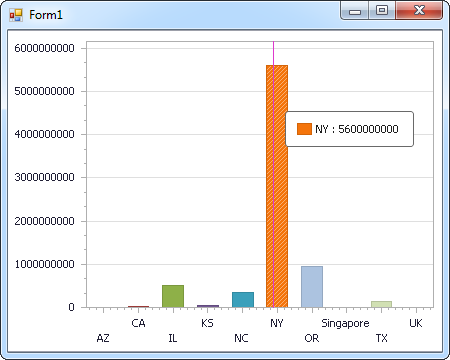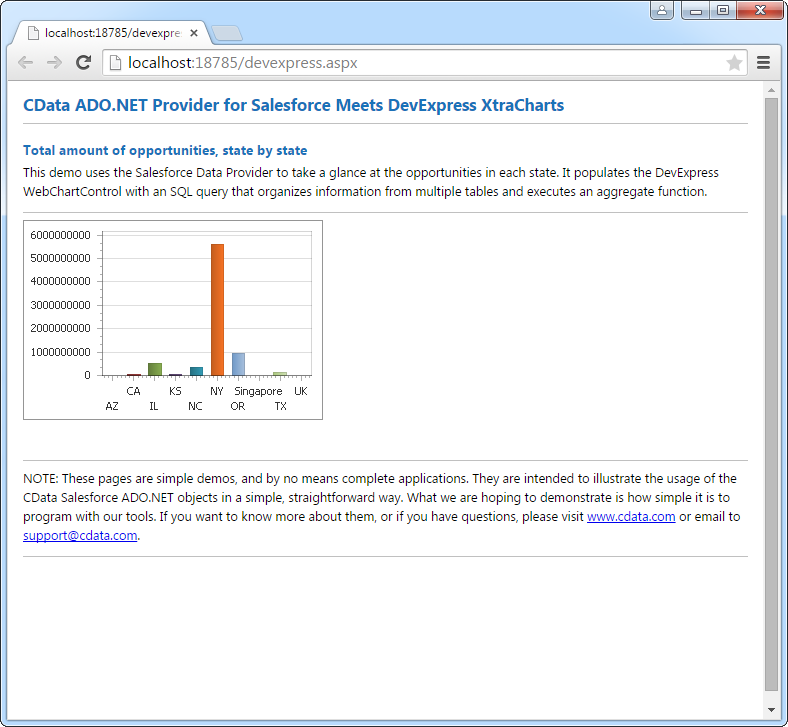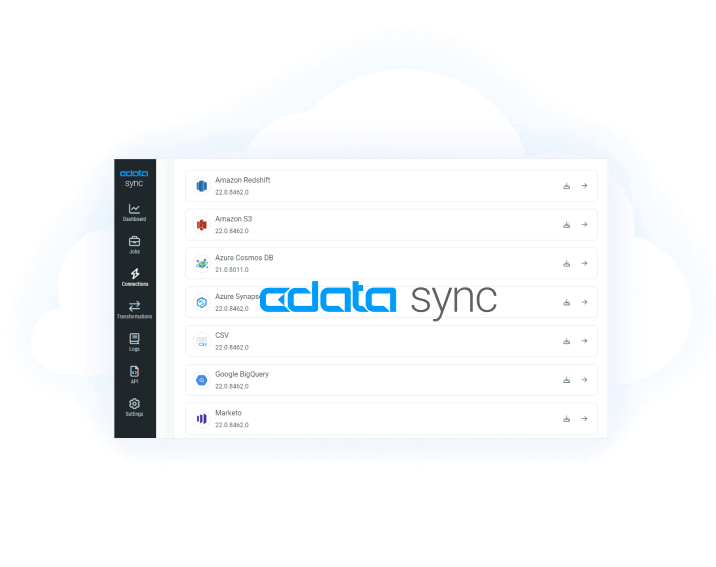Discover how a bimodal integration strategy can address the major data management challenges facing your organization today.
Get the Report →DataBind Oracle Data to the DevExpress Data Grid
Use the CData ADO.NET Provider for Oracle with the DevExpress Windows Forms and Web controls to provide Oracle data to a chart.
The ADO.NET Provider for Oracle by CData incorporates conventional ADO.NET data access components compatible with third-party controls. You can adhere to the standard ADO.NET data binding procedures to establish two-way access to real-time data through UI controls. This article will demonstrate the utilization of CData components for data binding with DevExpress UI Controls (Windows Forms and Web controls), specifically binding to a chart that visualizes live data.
To connect to Oracle, you'll first need to update your PATH variable and ensure it contains a folder location that includes the native DLLs. The native DLLs can be found in the lib folder inside the installation directory. Once you've done this, set the following to connect:
- Port: The port used to connect to the server hosting the Oracle database.
- User: The user Id provided for authentication with the Oracle database.
- Password: The password provided for authentication with the Oracle database.
- Service Name: The service name of the Oracle database.
Windows Forms Controls
The code below shows how to populate a DevExpress chart with Oracle data. The OracleOCIDataAdapter binds to the Series property of the chart control. The Diagram property of the control defines the x- and y-axes as the column names.
using (OracleOCIConnection connection = new OracleOCIConnection(
"User=myuser;Password=mypassword;Server=localhost;Port=1521;")) {
OracleOCIDataAdapter dataAdapter = new OracleOCIDataAdapter(
"SELECT CompanyName, City FROM Customers WHERE Country = US", connection);
DataTable table = new DataTable();
dataAdapter.Fill(table);
DevExpress.XtraCharts.Series series = new DevExpress.XtraCharts.Series();
chartControl1.Series.Add(series);
series.DataSource = table;
series.ValueDataMembers.AddRange(new string[] { "City" });
series.ArgumentScaleType = DevExpress.XtraCharts.ScaleType.Qualitative;
series.ArgumentDataMember = "CompanyName";
series.ValueScaleType = DevExpress.XtraCharts.ScaleType.Numerical;
chartControl1.Legend.Visibility = DevExpress.Utils.DefaultBoolean.False;
((DevExpress.XtraCharts.SideBySideBarSeriesView)series.View).ColorEach = true;
}

Web Controls
The code below shows how to populate a DevExpress Web control with Oracle data. The OracleOCIDataAdapter binds to the Series property of the chart; the Diagram property defines the x- and y-axes as the column names.
using DevExpress.XtraCharts;
using (OracleOCIConnection connection = new OracleOCIConnection(
"User=myuser;Password=mypassword;Server=localhost;Port=1521;"))
{
OracleOCIDataAdapter OracleOCIDataAdapter1 = new OracleOCIDataAdapter("SELECT CompanyName, City FROM Customers WHERE Country = US", connection);
DataTable table = new DataTable();
OracleOCIDataAdapter1.Fill(table);
DevExpress.XtraCharts.Series series = new Series("Series1", ViewType.Bar);
WebChartControl1.Series.Add(series);
series.DataSource = table;
series.ValueDataMembers.AddRange(new string[] { "City" });
series.ArgumentScaleType = ScaleType.Qualitative;
series.ArgumentDataMember = "CompanyName";
series.ValueScaleType = ScaleType.Numerical;
((DevExpress.XtraCharts.SideBySideBarSeriesView)series.View).ColorEach = true;
}







